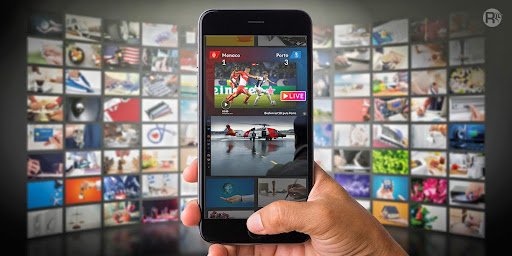Video Streaming Mobile App Development: A Comprehensive Guide to Building the Future of Entertainment

In the last decade, video streaming has revolutionized the way we consume content. From Netflix and YouTube to live streaming platforms like Twitch, video streaming mobile apps have become a vital part of our daily entertainment. The rise in demand for video content on mobile devices is only growing, making video streaming mobile app development a lucrative and rapidly evolving space for businesses, developers, and startups.
Developing a successful video streaming app requires understanding user needs, integrating the right technology, and ensuring seamless user experience. In this article, we’ll break down the essentials of video streaming app development and explore how to create a robust, user-centric platform that delivers high-quality video content efficiently.
Key Aspects of Video Streaming Mobile App Development
1. Understanding Market Needs and User Expectations
Before diving into development, it’s crucial to analyze the current video streaming market and define your target audience. Different types of video streaming apps cater to various niches such as:
- On-Demand Streaming (VOD): Apps like Netflix, Hulu, and Disney+ allow users to stream pre-recorded content at their convenience.
- Live Streaming: Platforms like Twitch and YouTube Live provide real-time video streaming services for events, gaming, or live interaction.
- User-Generated Content: Apps like TikTok or Instagram Reels focus on short-form video content created by users.
Understanding your app’s purpose helps you design features and functionality that align with user expectations, including buffer-free streaming, high-quality video resolution, offline viewing, social sharing, and personalized recommendations.
2. Choosing the Right Video Streaming Technology
Choosing the right technology stack is fundamental to ensuring smooth and scalable performance. Several key components come into play during the development process:
- Streaming Protocols: You need to choose a streaming protocol that fits the needs of your app. The most commonly used ones are HTTP Live Streaming (HLS) and MPEG-DASH. HLS, developed by Apple, is widely adopted for mobile applications, while MPEG-DASH provides more flexibility in terms of bandwidth adaptability.
- Content Delivery Networks (CDNs): CDNs like Cloudflare, Akamai, or Amazon CloudFront ensure that videos are delivered from the server closest to the user, improving load times and reducing latency.
- Video Encoding: Video encoding technologies like H.264, VP8, and VP9 compress video files, making them suitable for transmission over the internet. High Efficiency Video Coding (HEVC or H.265) is becoming increasingly popular for mobile streaming apps due to its efficiency in delivering high-resolution content with minimal data usage.
- Backend and Storage: Cloud platforms such as AWS, Google Cloud, or Azure provide flexible and scalable storage solutions for video streaming apps. They also support microservices architecture to ensure that the app remains highly responsive as the user base grows.
3. Feature Set for Video Streaming Apps
To make your app stand out in a competitive market, it’s essential to integrate features that enhance the overall user experience. The following are must-have features for video streaming apps:
- User Registration and Profiles: Enable users to create personalized profiles where they can manage preferences, track watched content, and receive recommendations.
- Search and Discovery: A robust search engine, combined with AI-driven recommendation algorithms, helps users find relevant content based on their history, likes, and viewing patterns.
- Multiple Resolutions and Adaptive Bitrate Streaming (ABR): Adaptive bitrate streaming ensures that users get the best possible video quality based on their device and network conditions. It dynamically adjusts video quality in real-time to prevent buffering or slow load times.
- Offline Viewing: Many streaming apps offer users the ability to download content for offline viewing, allowing them to watch videos without an internet connection.
- Social Sharing and Interaction: Incorporating social sharing features allows users to share their favorite content with friends via social media platforms, expanding your app’s reach.
- In-App Purchases and Subscriptions: A well-thought-out monetization model, including in-app purchases, premium subscriptions, or ad-based models, is crucial for the sustainability of the app.
4. Ensuring Security and Copyright Protection
Video streaming apps must take significant steps to protect their content and users’ data. Security measures include:
- Digital Rights Management (DRM): DRM tools like Google Widevine or Apple FairPlay ensure that only authorized users can access specific content.
- Data Encryption: Encrypting data streams using SSL/TLS protocols helps protect the app from hacking or unauthorized access.
- User Authentication: Implementing secure login methods (such as OAuth or multi-factor authentication) reduces the risk of unauthorized access and data breaches.
5. Monetization Models
Choosing the right monetization model is key to your app’s profitability. Some of the most common approaches include:
- Subscription-Based Model (SVOD): Users pay a recurring fee to access premium content (e.g., Netflix, Disney+).
- Ad-Based Model (AVOD): Users watch content for free, but ads are shown intermittently (e.g., YouTube).
- Pay-Per-View (TVOD): Users pay for specific content on a per-view basis (e.g., Amazon Prime Video).
- Hybrid Model: A combination of subscription and ad-based revenue generation, offering free content alongside paid premium features.
Challenges in Video Streaming Mobile App Development
Developing a video streaming app comes with its own set of challenges:
- Network Connectivity: Users often face varying internet speeds, which can impact streaming quality. Optimizing content for mobile networks (4G/5G) is crucial to providing a seamless experience.
- Latency: Reducing latency is essential, especially for live streaming apps where real-time interaction and minimal delay are expected.
- Scalability: As the app grows in popularity, it must handle a larger volume of users and content without compromising on performance.
- Device Compatibility: Your app must function well across different devices, operating systems (iOS, Android), and screen sizes.
The Future of Video Streaming Mobile App Development
As mobile data speeds increase and more users shift to consuming video content on their mobile devices, the video streaming market will continue to evolve. Emerging technologies like 5G, virtual reality (VR), augmented reality (AR), and AI-based video analytics will shape the future of video streaming apps, allowing for more immersive and personalized experiences.
AI-driven features like personalized recommendations, voice recognition, and automated content tagging will also become key differentiators in the video streaming space. Integrating machine learning algorithms will enable platforms to offer highly curated content based on individual preferences, viewing patterns, and real-time engagement.
Conclusion
Building a successful video streaming mobile app involves careful planning, technical expertise, and a deep understanding of user preferences. By leveraging the right technology stack, focusing on user experience, and ensuring scalability, developers can create a platform that meets the growing demand for high-quality, on-the-go video entertainment. Whether you’re creating an on-demand streaming service, live-streaming app, or user-generated content platform, investing in robust video streaming app development will be crucial to capturing a slice of this dynamic and expanding market.




